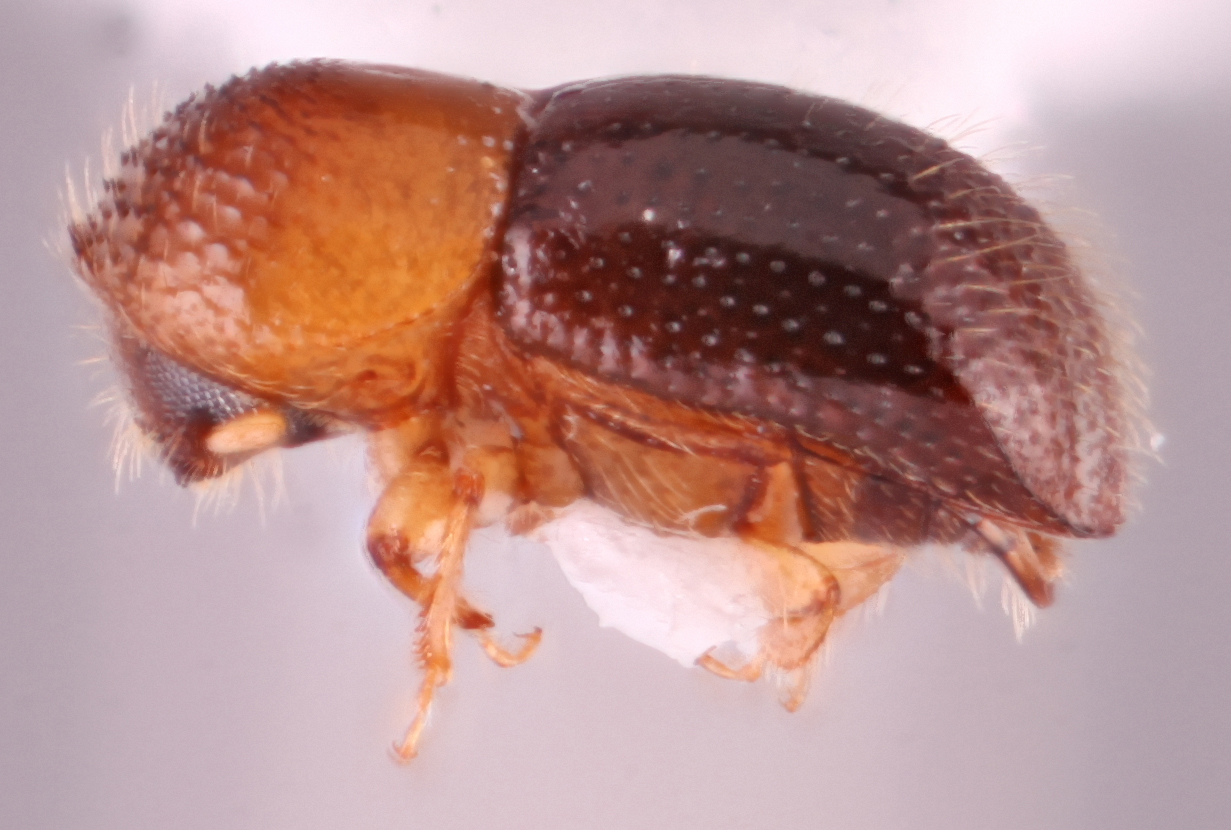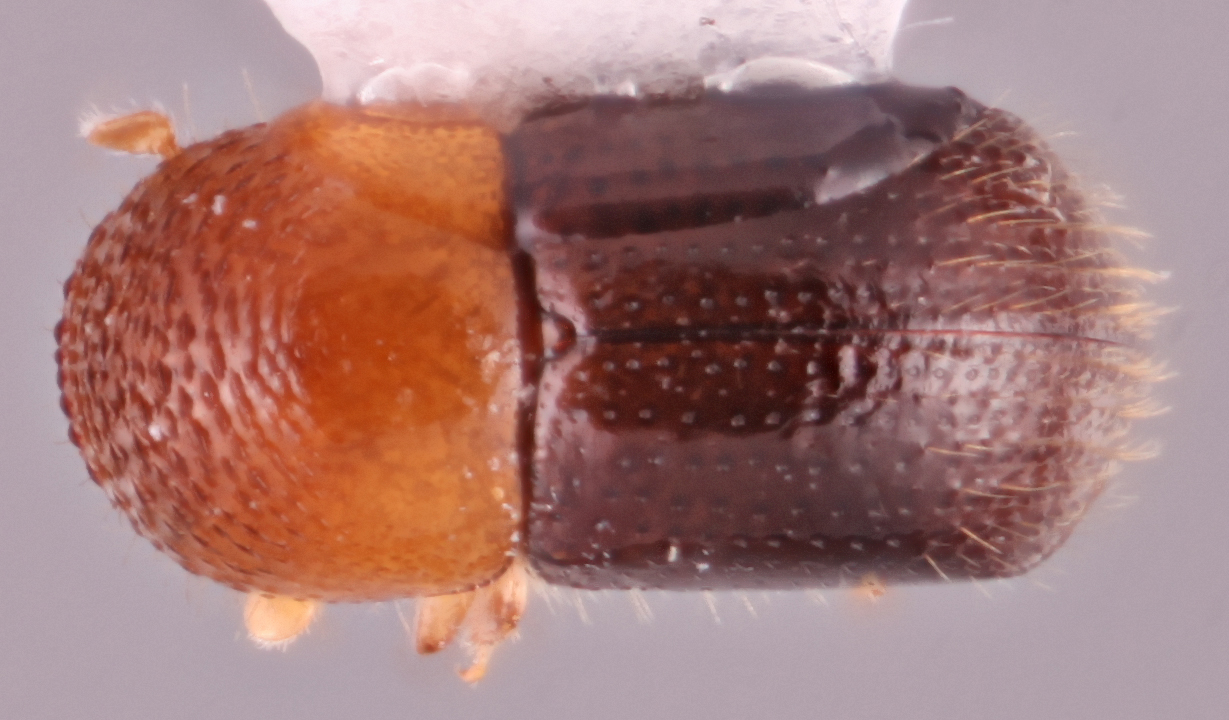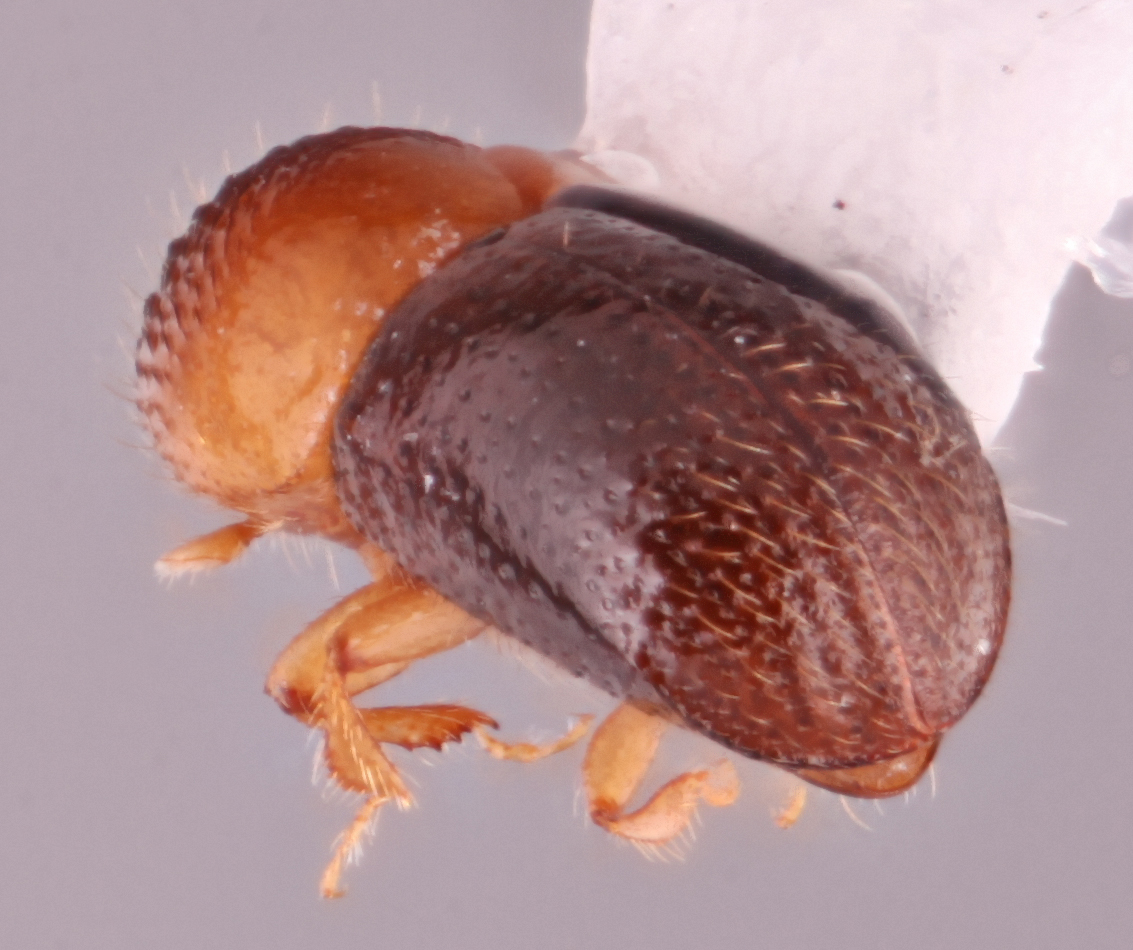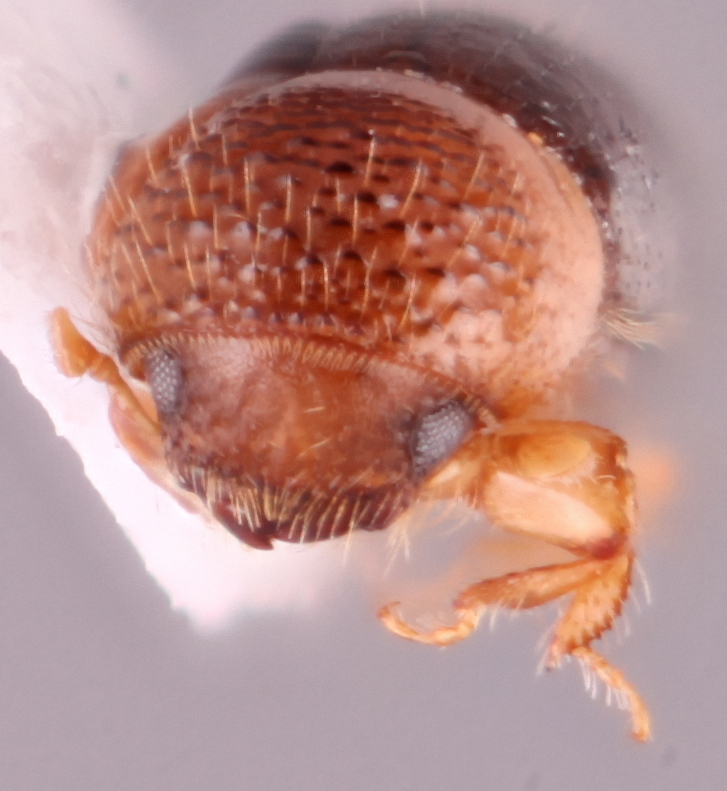Xylosandrus mesuae
|
Xylosandrus mesuae lateral; S.M. Smith |
|
Xylosandrus mesuae dorsal; S.M. Smith |
|
Xylosandrus mesuae declivity; S.M. Smith |
|
Xylosandrus mesuae frontal; S.M. Smith |
Taxonomic history
Xyleborus mesuae Eggers, 1930: 182.
Xylosandrus mesuae (Eggers): Browne, 1963: 55.
Diagnosis
1.3−1.7 mm long (mean = 1.5 mm; n = 5); 2.29−2.6 times as long as wide. This species can be distinguished by its minute size; elytralelytral:
'pertaining to the elytra
discdisc:
the flat central upper surface of any body part (e.g. pronotum and elytra) gradually curving toward declivitydeclivity:
gradually curving toward declivitydeclivity:
downward slope of either the pronotum or elytra
 , appearing rounded; elytralelytral:
, appearing rounded; elytralelytral:
'pertaining to the elytra
discdisc:
the flat central upper surface of any body part (e.g. pronotum and elytra) convexconvex:
convexconvex:
appearing rounded , discdisc:
, discdisc:
the flat central upper surface of any body part (e.g. pronotum and elytra) as long as declivity; posterolateralposterolateral:
as long as declivity; posterolateralposterolateral:
'relating to end of the side part/portion
 margins of elytraelytron:
margins of elytraelytron:
'
the two sclerotized forewings of beetles that protect and cover the flight wings
carinate to interstriaeinterstria:
'longitudinal spaces along the elytra between the striae, which is not as<br />
impressed and bear smaller punctures.
 7; declivitaldeclivital:
7; declivitaldeclivital:
pertaining to the elytral declivity
face with six punctatepunctate:
'set with fine impressed points, appearing as pin pricks
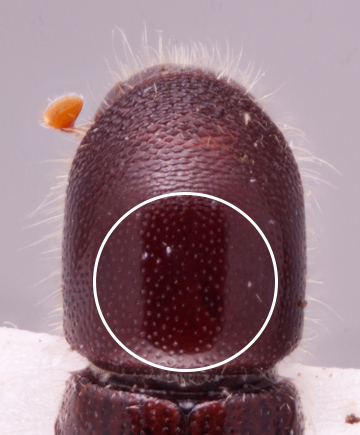 striae; declivitaldeclivital:
striae; declivitaldeclivital:
pertaining to the elytral declivity
striae setose, setaeseta:
small hair-like or scale-like structure
semi-recumbentsemi-recumbent:
pertaining to setae that are in between'erect and recumbent, usually at a 45 degree angle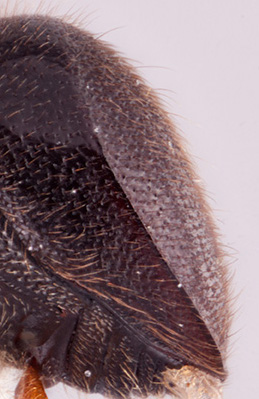 hairs less than the width of one interstriainterstria:
hairs less than the width of one interstriainterstria:
'longitudinal spaces along the elytra between the striae, which is not as<br />
impressed and bear smaller punctures.
 ; interstriaeinterstria:
; interstriaeinterstria:
'longitudinal spaces along the elytra between the striae, which is not as<br />
impressed and bear smaller punctures.
 granulategranulate:
granulategranulate:
'pertaining to a coarse, grainy surface texture'
 , uniseriate with erecterect:
, uniseriate with erecterect:
'pertaining to setae that have their apices directed away from the body and appear straight
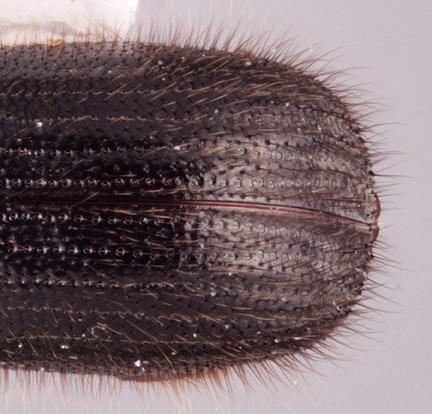 hair-like setaeseta:
hair-like setaeseta:
small hair-like or scale-like structure
longer than the width of one interstriainterstria:
'longitudinal spaces along the elytra between the striae, which is not as<br />
impressed and bear smaller punctures.
 ; pronotumpronotum:
; pronotumpronotum:
'the dorsal surface of the thorax
wider than long, from dorsaldorsal:
'of or relating to the upper surface; opposite of ventral
 view rounded (type 1) and laterallateral:
view rounded (type 1) and laterallateral:
'pertaining to the side
 view rounded (type 0), summitsummit:
view rounded (type 0), summitsummit:
highest point, used for pronotum and elytra, denotes the peak between pronotal frontal slope and disc, and between elytral disc and declivity at midpoint, basalbase:
at midpoint, basalbase:
point or edge closest to the body; opposite of apex half smooth, shiningshining:
half smooth, shiningshining:
appearing glossy or bright in luster; referring to a surface that is polished and reflects light well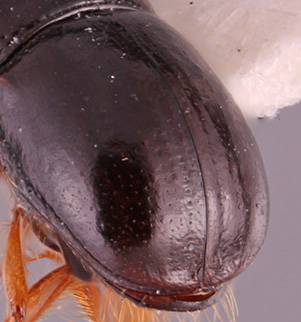 , sparsely minutely punctatepunctate:
, sparsely minutely punctatepunctate:
'set with fine impressed points, appearing as pin pricks
 ; and sparse mycangial tuftmycangial tuft:
; and sparse mycangial tuftmycangial tuft:
'tuft of setae that denotes the mycangia exterior opening
 on the pronotalpronotal:
on the pronotalpronotal:
'pertaining to the pronotum
basebase:
point or edge closest to the body; opposite of apex .
.
May be confused with
Xylosandrus adherescens, X. compactus, X. derupteterminatus, and X. morigerus
Distribution
China (Hong Kong), India (Arunachal Pradesh, Uttarakhand, West Bengal), Sri Lanka, Taiwan, Thailand
Host plants
recorded from Dipterocarpus, Shorea (Dipterocarpaceae), Macaranga (Euphorbiaceae), Mesua (Guttiferae), and Osbeckia (Melastomataceae) (Dole and Cognato 2010Dole and Cognato 2010:
Dole SA, Cognato AI, 2010. Revision of Xylosandrus Reitter (Curculionidae: Scolytinae). Proceedings of the California of Science 61: 451-545.)
DNA data
Sequences available for COI and CAD.
COI: MN620101
CAD: MN620357

